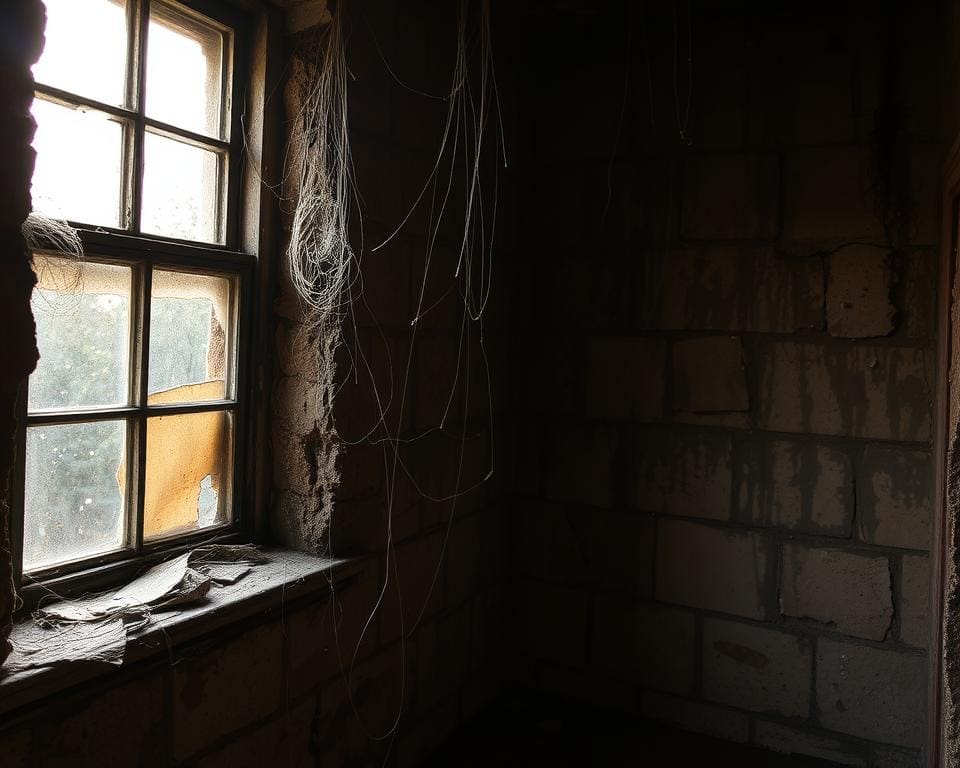Preserving the historical essence of heritage homes in the UK is of utmost importance, not only for their architectural significance but also for their role in our cultural identity. Unfortunately, damp issues pose a significant threat to these beloved structures, often necessitating urgent restoration efforts. This highlights a pressing question: what funding helps with damp issues in UK heritage homes? Financial assistance is available through various programmes designed to support heritage home funding UK and combat UK funding for damp issues in historical buildings. Understanding these resources can make a crucial difference in ensuring that these treasured properties endure for future generations.
Understanding Damp Issues in Heritage Homes
Damp issues in heritage homes present unique challenges that can threaten the integrity and preservation of these valuable properties. Identifying the common causes of damp in historical properties is essential to mitigate their effects and maintain the beauty of such buildings.
Common Causes of Damp in Historical Properties
A variety of factors contribute to the emergence of damp issues in heritage homes. Key factors include:
- Rising damp: This occurs when water rises up from the ground through porous materials, often due to inadequate damp-proof courses.
- Pene trating damp: This type of damp results from external moisture infiltrating the property through roofs, walls, or windows, commonly in older buildings with aging materials.
- Condensation: Poor ventilation leads to the buildup of humidity, which results in condensation forming on cold surfaces such as walls and windows.
Age and structural issues exacerbate these conditions. Deteriorating roofs, cracked walls, and insufficient air circulation can all contribute to the problematic nature of damp. Awareness of these common causes is vital for the effective preservation of heritage properties.
Impact of Damp on Heritage Buildings
The impact of damp on heritage buildings extends beyond surface imperfections. Significant structural integrity issues may arise if damp problems remain unaddressed. Key concerns include:
- Decreased durability of building materials, leading to potential collapse.
- Health risks for occupants due to mould and mildew.
- A threat to conservation status, which can affect property values and historical significance.
Understanding the intricate relationship between these factors and damp issues in heritage homes underscores the need for strategic initiatives dedicated to their preservation. By addressing moisture problems early, the longevity and charm of these historic buildings can be maintained for future generations.

What funding helps with damp issues in UK heritage homes?
Addressing damp issues in heritage homes requires financial resources that can help owners tackle this challenge effectively. Various funding options exist to assist in maintaining the unique character of these historical properties. A clear understanding of the available grants can empower property owners with the knowledge needed to preserve their homes.
Overview of Available Grants
Numerous organisations offer damp issue grants aimed specifically at heritage properties. English Heritage and the National Lottery Heritage Fund stand out as key players, providing substantial financial support. Local council schemes may also allocate funding for restoration purposes. Homeowners and tenants are encouraged to explore these avenues, as they encompass a comprehensive overview of available grants to alleviate damp challenges in their beloved buildings.
Who is Eligible for Funding?
Eligibility for UK heritage home preservation funding often varies depending on specific grant requirements. Generally, homeowners and tenants with properties recognised as historically significant may qualify for assistance. It is essential to review the individual conditions of each funding programme, ensuring potential applicants can accurately determine who is eligible for funding. This process can open doors to support that facilitates essential renovations, ultimately preserving the character and integrity of heritage homes.
Government Support for Heritage Property Preservation
Preserving the cultural heritage of the United Kingdom is a responsibility that utilises various channels of government support for heritage property preservation. This support takes shape through numerous initiatives aimed at safeguarding the past while promoting sustainability and tourism. Understanding these key government initiatives provides insight into how they bolster efforts to maintain and restore historic properties.
Key Government Initiatives
The UK government has launched several programmes designed to encourage the maintenance and restoration of heritage properties. Initiatives such as the Heritage Conservation Grants provide essential funding to property owners, enabling them to tackle significant restoration projects. Other key government initiatives include regulatory measures that offer tax relief for refurbishing listed buildings as well as funds dedicated to community-led projects aimed at enhancing local heritage sites.
How to Apply for Government Support
Homeowners and organisations looking to benefit from government support for heritage property preservation can follow a systematic application process. To apply, it is crucial to gather all necessary documentation, including property information and detailed project plans. Prospective applicants can access application forms and guidelines through dedicated government websites that outline eligibility criteria. Engaging with local councils or heritage organisations can also provide additional insights on how to apply for government support effectively, ensuring a streamlined approach to securing the needed funding.
Heritage Home Maintenance Grants
Restoring and maintaining heritage homes requires significant resources, and fortunately, various financial assistance options exist. Heritage home maintenance grants are crucial for property owners seeking to preserve the integrity of their historic buildings. These grants can address a range of issues, from tackling damp problems to necessary structural repairs, ensuring that these treasures remain part of our cultural heritage.
Types of Maintenance Grants Available
There are several types of maintenance grants available designed specifically for heritage properties. Owners can explore:
- Public grants from government initiatives aimed at heritage preservation.
- Private foundation grants offering funds for specific restoration projects.
- Targeted funding for addressing damp proofing and structural integrity.
- Local community grant schemes designed to support heritage conservation at a grassroots level.
Success Stories from Grant Recipients
Real-life success stories from grant recipients highlight the transformative power of funding. Many individuals have successfully restored their homes, turning them into vibrant historical assets that benefit their communities. One notable example includes a couple who, with the help of heritage home maintenance grants, revitalised a decaying townhouse into a beautiful bed and breakfast, drawing visitors and enhancing the local economy. These inspiring narratives serve as a reminder of the potential that exists when support is available.
Exploring Heritage Building Restoration Grants
The preservation of our heritage buildings is crucial for maintaining the character of the UK’s unique historical landscape. Heritage building restoration grants represent a vital source of funding for heritage building restoration, especially for properties grappling with damp issues. These dedicated grants not only provide financial assistance but also ensure that the craftsmanship and architectural significance of historical homes are protected for future generations.
Organisations such as the Architectural Heritage Fund play a pivotal role in facilitating access to funding for heritage building restoration. They offer guidance through the application process and support homeowners in identifying suitable projects. The criteria for these grants typically focus on the extent of restoration needed, the historical value of the property, and the potential impact on community heritage. Such structured support is invaluable for maintaining and restoring the aesthetic and cultural richness embedded in our historical architecture.
Ultimately, securing UK funding for heritage buildings is an essential step for homeowners determined to preserve their properties. By actively seeking out these opportunities, individuals can not only protect their homes but also contribute to the wider goal of conserving Britain’s rich architectural legacy. The journey of restoration is one filled with passion, and with the right funding, these cherished buildings can continue to tell their stories for generations to come.









